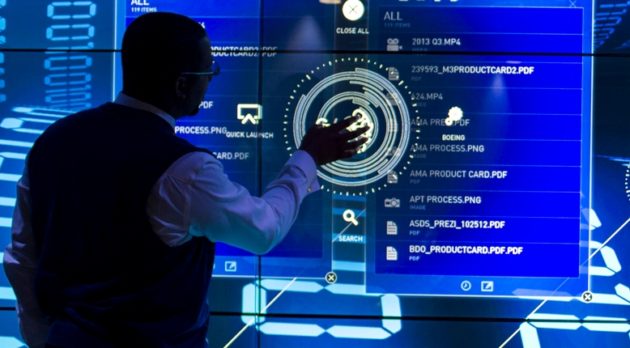
Boeing is raising its profile on computational frontiers ranging from artificial intelligence to quantum communications by setting up a new organization called Disruptive Computing and Networks, or DC&N, to put those technologies to work in aerospace.
The new organization will be based in Southern California and operate as part of Boeing’s Engineering, Test & Technology unit. Charles Toups is moving over from his post as vice president and general manager of Boeing Research & Technology to lead DC&N as vice president and general manager.
Boeing’s shift aims to stimulate innovations in secure communications, AI and complex system optimization. The move signals that the high-tech worlds of aerospace and advanced computing are increasingly converging, said Greg Hyslop, Boeing’s chief technology officer and senior vice president of Engineering, Test & Technology.
“We’re just seeing enough development in advanced computing architectures … that are going to have a profound influence on our products and on our business, that we thought now is the time to do this,” Hyslop told GeekWire today. “We’re not going to go and build our own supercomputer, but we need to monitor what’s going on. We may end up writing algorithms that are on those supercomputers to solve some of our hardest problems.”
For example, AI has obvious applications in autonomous flight, while quantum computers could be tailor-made for the network optimization challenges that Boeing will face as it works on next-generation air traffic management systems.
“That’s a no-kidding hard problem,” Hyslop said.
DC&N will also focus on advanced sensing as well as neuromorphic processing, which aims to mimic the human brain’s approach to information processing. Hyslop noted that HRL Laboratories (formerly Hughes Research Laboratories), which is jointly owned by GM and Boeing, is already a pioneer in neuromorphic processing.
Over the past year or two, Boeing has launched several initiatives to widen its reach on the technological frontier:
- Boeing HorizonX Ventures has invested in more than a dozen startups that are pioneering technologies relevant to next-generation aerospace, ranging from additive manufacturing and drones to virtual reality and space-based laser communications.
- Boeing NeXt leverages the company’s internal research and development efforts in mobility technologies with work being done by its partners.
- Boeing AnalytX coordinates the work of hundreds of data analytics experts across the company.
In addition to developing Boeing’s internal capabilities, DC&N will work closely with Boeing HorizonX to identify external partners for collaboration, Boeing said in a news release.
Naveen Hussain will become the new leader of Boeing Research & Technology. He has previously served as vice president of Aeromechanics Technology and leads the BR&T facility in Southern California.
BR&T is Boeing’s advanced central R&D organization and employs nearly 4,000 engineers, scientists, technicians and technologists at five U.S. facilities and six international research centers. Hyslop said DC&N won’t have nearly as many employees under its aegis, but will draw upon researchers from a wide range of Boeing facilities.
